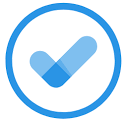Title Page
-
Site
-
Conducted on
-
Prepared by
-
Location
Identify - Isolate - Inform Algorithm
-
To be completed at initial patient contact
Identify
-
Travel outside of US in past 30 days?
-
check your hospital’s resource to identify areas of travel and current outbreaks of concern (insert link if applicable)
-
Positive Symptom Screen? (i.e. fever, rash, cough, vomiting, diarrhea
Isolate
-
Instruct patient to don surgical mask
-
Isolate patient 6 feet from staff, other patients, and visitors
Inform
-
Contact the Nurse in Charge
-
Nurse in Charge:
-
Notify Attending physician & appropriate clinicians
-
Contact ED/Clinic Administrator or appropriate individual
-
Secure an Airborne Infection Isolation (negative pressure) room for the patient
-
ED/Clinic Administrator:
-
Notify appropriate departmental leadership (examples to consider in your planning are Infectious Disease Attending Physician, Hospital<br>Epidemiologist)
-
Airborne Infection Isolation available within 15 min?
-
Patient can remain in place with a surgical mask on and 6 from other visitors until being moved
Isolation Precautions Needed:
Viral Hemorrhagic Fever or Small Pox PPE precautions
If protocols/procedures exist for specific HCIDs, refer to those here
Refer/link to CDC or appropriate institutional policies for guidance on level/type of isolation precautions to implement -
Escort patient to a closed-door room to wait for AII room availability
Notify attending physician and nurse to don appropriate PPE and begin patient interview and evaluation per institutional protocol -
When Airborne Infection Isolation Room is available
-
Ensure negave pressure (i.e. visual indicator or ssue test)
-
Ensure all staff entering the room wear appropriate PPE and have been trained in donning/doffing
-
Escort paent to AII room, keeping staff and visitors 6 feet away
-
Place appropriate instuonal signage on the door
Ebola Virus Disease or other Viral Hemorrhagic Fevers
Identify
-
The patient has been identified as a Person Under Investigation (PUI) or confirmed with Viral Hemorrhagic Fever
Isolate
-
The patient has been masked
-
Staff not in PPE must remain >6 from patient
-
Transport to private room with bathroom or commode;
-
Airborne Infecon Isolaon (AII) room preferred & required for aerosol generang procedures
-
Only staff trained in PPE will enter room
-
Discuss with identified institutional representative (maybe an assigned attending physician, or local or state public health) for guidance on determination of level of PPE required and plan for parent
Inform
UNPLANNED ARRIVAL OF PATIENT PLANNED ARRIVAL OF PATIENT
-
AMBULANCE EMS/REFERRAL/AMBULATORY WALK-IN ARRIVAL
The nurse in charge will assign roles to ED/clinic staff as soon as patient identified -
• Retrieve the instuonal EVD protocol including prepared checklist for plan and assign Site Manager
-
• Page a nursing supervisor or other designated individual to coordinate the inial response
-
• An appointed Site Manager receives appointment from the nurse in charge; obtains the hospital outlined EVD protocol and Site Manager checklist/toolkit
-
Job Action Sheets/Checklists should include:
-
• Attending physician to contact appropriate institutional leadership
-
• Notify Hospital Security to secure the perimeter of the ED/Clinic and specified area of treatment.
-
• Ensure ED/clinic staff are ready to safety receive the patient in a designated negative pressure room.
-
• Trained Observer: Oversee PPE donning/doffing for ED staff
-
• Doffing Buddy in doffing area in appropriate to assist with doffing
-
• ED/Clinic Administrator notifies necessary departments of the EVD Patient Arrival
PLANNED ARRIVAL OF PATIENT
-
AMBULANCE ARRIVAL/TRANSFER
Job Action Sheets/Checklists should include: -
• Attending physician to contact appropriate institutional leadership
-
• A Site Manager is assigned per the hospital EVD protocol and retrieves Site Manager checklist/toolkit
-
• Notify Hospital Security to secure the perimeter of the ED/clinic and the specified area of patient treatment
-
• Notify the appropriate institutional and departmental leadership.
-
• Activate appropriate personnel to support the management of the patient.
Current Infectious Disease Outbreaks of Concern
- Country Traveling From
-
Specify country
-
Specify Surveillance Window (max me from the country of arrival to symptom onset)
-
Disease(s
-
Case Definition and Guidance
-
•Upload phoo/attachment for guidance if applicable
Doffing Checklist
DISPOSABLE GOWN AND N-95 RESPIRATOR
-
Except for Respirator, remove PPE at doorway or in anteroom if present.
Remove PPE in the following sequence. Avoid touching face
*Discard all PPE in regular waste -
1 Remove gown & gloves first - in a single step.<br>Roll gown into itself, peeling off gloves at the same time.<br><br>Hold gown away from your body and discard*<br><br>Location: <br>Doorway (inside or outside patient room- with door closed) or Anteroom
-
2 Remove and discard* face shield or goggles<br>Avoid touching the front of face shield. Remove by grasping sides or back of strap then pull forward over head <br><br>Avoid touching front of goggles. Remove by grasping sides and pull away from your face<br><br>Location: <br>Doorway (inside or outside patient room- with door closed) or Anteroom
-
3 Remove and discard* N-95 Respirator <br>Do NOT touch front of the mask<br><br>Pull bottom strap first then top strap overhead- without touching respirator <br><br>Discard in trash <br><br>Location<br>Outside room
-
4 Perform Hand Hygiene <br>Alcohol-based hand rub (ABHR) or wash with soap and water (if indicated), dry, then disinfect with ABHR.<br><br>Location<br>Outside room
DISPOSABLE GOWN AND PAPR
-
Except for PAPR, remove PPE at doorway or in anteroom if present.
Remove PPE in the following sequence. Avoid touching face -
1 Gown and Gloves<br>To facilitate gown and glove removal, remove belt from waist. Do not turn off blower.<br><br>Hang blower motor & belt on a hook or place on stable surface.<br><br>Location<br>Doorway (inside or outside patient room with door closed)<br>OR<br>in Anteroom (with patient room door closed)
-
2 Gown and Gloves<br>Once blower motor & belt are secured, remove gown & gloves in a single step.<br><br>Roll gown into itself, peeling off gloves at the same time.<br><br>Hold gown away from your body and discard*.<br><br>Location<br>Doorway (inside or outside patient room with door closed)<br>OR<br>in Anteroom (with patient room door closed)
-
3 PAPR – Outside room or in Anteroom<br>Perform hand hygiene - don clean gloves.Lean forward, do not touch front of hood.<br><br>Remove hood by reaching between inner and outer layers of hood aprons with one hand. Push within layers with one hand and pull from back of hood with other.<br><br>Disconnect breathing tube from blower unit, shut off blower. Discard hood and hose.<br><br>Belt and blower unit must be wiped down with hospital-approved disinfectant and stored. Plug blower into charging cord
-
4 Remove gloves perform Hand Hygiene<br><br>Alcohol-based hand rub (ABHR) or wash with soap<br>and water (if indicated), dry, then disinfect with ABHR<br><br>Location<br>Outside room
Completion
-
Prepard by



















